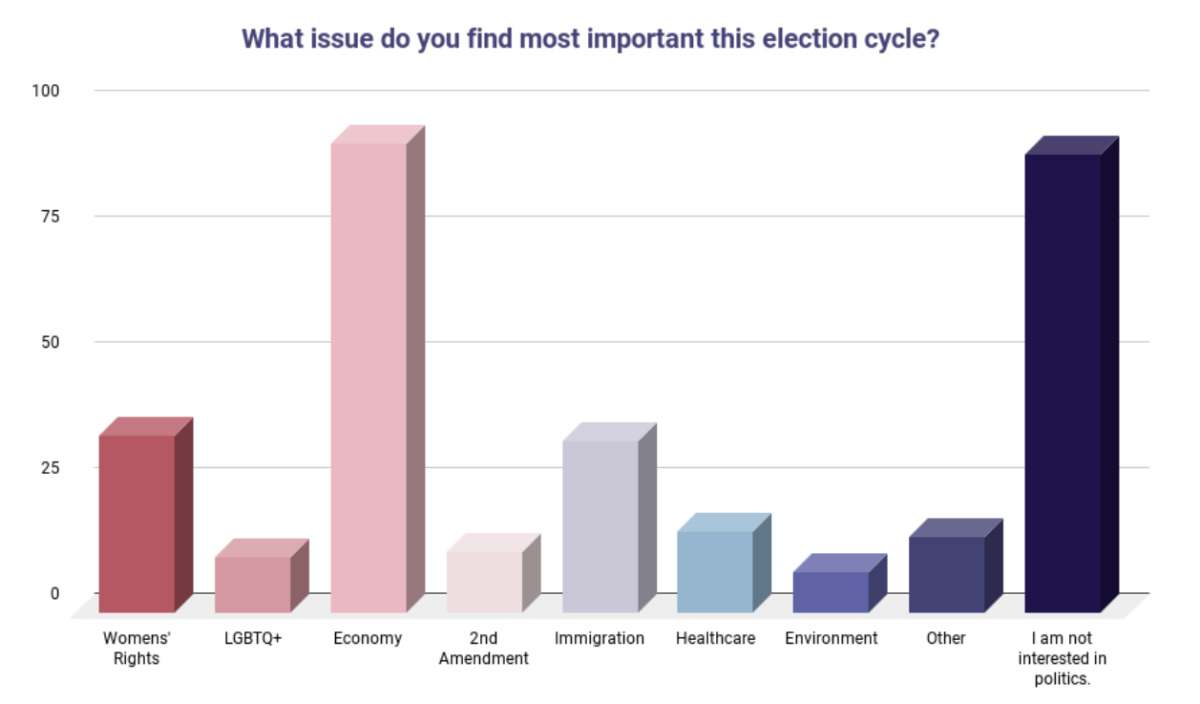She couldn’t seem to catch her breath. Senior Holly Riggs stuttered, stumbled over words and felt as if her world was caving in on itself. The annoyed voices of her friends rung in her ears, causing guilt to pool in the pit of her stomach.
She apologized repeatedly for cancelling their plans, but in reality, it wasn’t a big deal to her friends. However, for Riggs it was a matter of losing her friends or enduring an uncomfortable evening. She felt something like an electric shock run through her body until her chest was heaving.
“It’s as if every fiber of my being is telling me to get out of whatever situation I’m in,” Riggs said. “That it’s wrong, or I need to [get out] immediately.”
Anxiety can be hard to pinpoint for some people because of how it is generalized in movies and TV shows. Riggs says the portrayal of anxiety in movies is far from reality. It’s often depicted as rocking back and forth, accompanied by crying.
“It’s not always like that in real life,” Riggs said. “It’s different for everyone.”
Riggs recalls her anxiety growing inside her throughout middle school, around the same time she began to outgrow her group of friends. Conflicts and hostile feelings rose, and started to fill Riggs with a burning sensation from her chest to her throat.
Even little things like getting text messages began to fill her with dread.
“Somebody would text me, and my first thought wasn’t ‘Oh, it’s my friend,’” Riggs said. “It was more like, ‘Oh gosh, what is it this time?’”
Her anxiety also aided in the development of obsessive tendencies close to those of O.C.D. She finds herself washing her hands over and over if she touches anything she hasn’t touched before, or merely thinks of triggers like exposed metal anywhere outside.
It feels to her as if her hands are set on fire, and the only way to stop the pain is to wash her hands almost until her skin is raw and pruning.
• • •
Freshman year, Riggs sat silently among fellow classmates in her Humanities classroom. They were getting ready to walk around the business district of Dallas.
Student’s paired together in groups quickly, mutual friends She was too riddled with shakiness and fear to speak clearly and she couldn’t push herself to take a step in anyone’s direction.
“Sometimes it feels like butterflies in my tummy,” Riggs said. “Other times, everything’s going five million miles per hour, or I’m paralyzed with fear and nervousness.”
Although Rigg’s teacher stepped in and guided her into an established group, she still couldn’t shake the anxiety. The thought of having to explore a big, unfamiliar city with people she barely knew shook her to the core.
“I got so nervous about it that I couldn’t go,” Riggs said.
Rigg’s anxiety is not only an internal struggle, but it can also be seen in her mannerisms — like shakiness and shallow breathing. Sometimes a stutter will also plague her words, and she’ll feel compelled to apologize obsessively.
“With normal stress, once whatever is stressing you out dissipates, so does your stress,” Riggs said. “But with anxiety, it doesn’t just go away.”
Although her anxiety and obsessive thoughts have grown inside her for years, she’s taught herself how to keep them under control. She has found multiple coping skills maintain her disorder, like mindful breathing and listening to music.
She often feels like a burden on her friends and family because of her anxiety and obsessive tendencies. But, Rigg’s said she believes that anxiety isn’t something you can fix overnight, or instantly. It is something that takes time, and support by those around you.
“If you’re in a place where you think you have an anxiety disorder, get help if it’s available to you,” Riggs said. “Seek help any way you can.”









